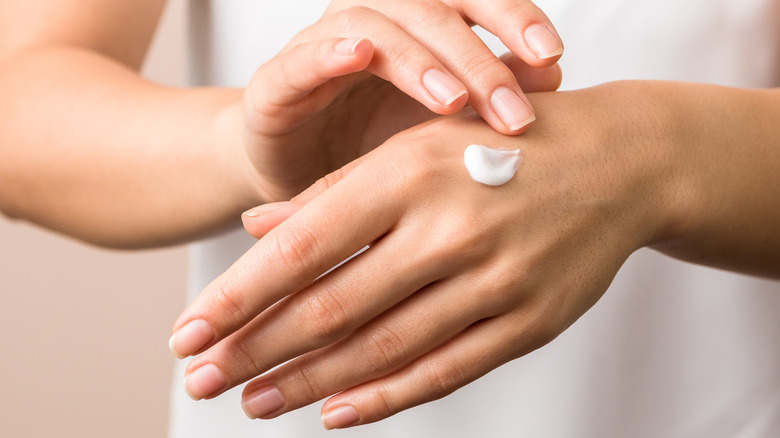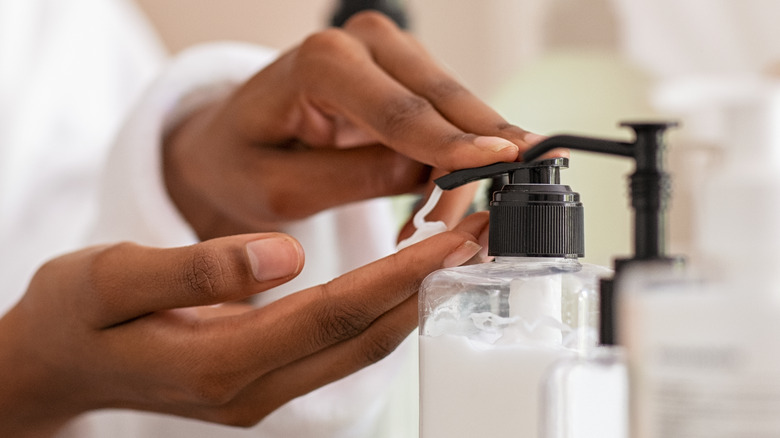How To Avoid Dry And Cracked Hands During The Winter
Keeping hands soft and supple in the wintertime can be a challenge. Winter is known to have dryer air than other seasons, and dry air tends to deplete our skin's moisture (via Penn Medicine). Unfortunately, outside air isn't the only moisture-robbing culprit, either. Hot air circulating from our heaters and furnaces can also lead to dry hands and skin, but those aren't the only challenges winter brings.
As many of us attempt to avoid catching colds and the flu during winter months, hand soaps can strip natural moisture from the skin, leading to cracking and bleeding (via WebMD). Interestingly, doctors also suggest genetics are at play when it comes to hand and skin moisture. In fact, the strength of your skin barrier and its combination of proteins, lipids, and oils, have a lot to do with how dry your skin will get. Weaker skin barriers and those who typically have more sensitive skin and ailments like eczema are more prone to winter chapping and dryness.
Preventing dry skin before it starts
Health experts say you'll want to start a moisturizing routine before your skin becomes dry and cracked (via WebMD). When thinking about creating a moisturizing routine, consider applying moisturizer to your hands at least daily and up to 6 times a day for around-the-clock moisture. Because it can be hard to remember to apply moisturizer, keeping lotion in several places — like at your desk or in the car — can be helpful.
Since hand-washing can cause dryness, keeping a bottle of moisturizer at your sink can help replace moisture after every time you wash them (via Prevention). When choosing your moisturizer, take a look at the label. Generally, you'll want the ingredients that prevent moisture loss, add moisture, and soothe skin. Be on the lookout for star moisturizing ingredients, such as petrolatum, hyaluronic acid, lanolin, cocoa and shea butter, glycerin, and aloe vera. These can help you prevent dry skin from becoming a winter-long problem.


